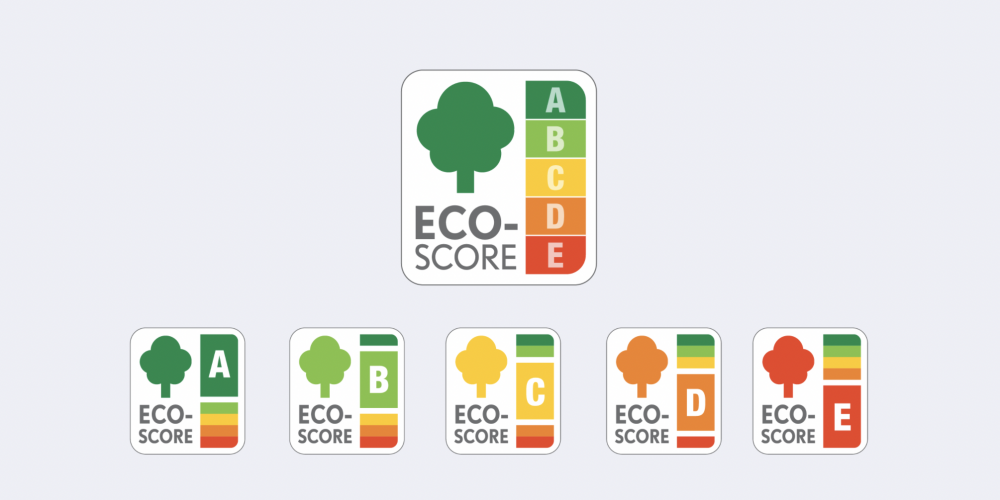Colruyt Group launches Eco-Score to show the environmental impact of food products
Our partner Colruyt Group created a visual solution to show consumers the environmental impact of food products through the Eco-Score.

Our partner Colruyt Group created a visual solution to show consumers the environmental impact of food products through the Eco-Score. Products of the Boni Selection, Colruyt’s own brand, get an Eco-Score that represents the sustainability of the entire life cycle. Consumers can check this in Colruyt’s SmartWithFood app. It’s the retailer’s ambition to help consumers adopt more sustainable shopping habits.
The Eco-Score is a unique initiative in Belgium. Colruyt is the first retailer that goes the extra mile to show consumers the environmental impact of food products by reviewing the entire life cycle of each product. In total, 2500 products of the Boni Selection as well as a few private labels have received an Eco-Score. This can be reviewed in the app SmartWithFood.
Nutri-Score and Eco-Score go hand in hand
The process is very simple. Consumers simply scan the barcode of a Boni product with the app to receive its Eco-Score. The way the products are ranked is quite similar to the more well-known Nutri-Score that informs people about the health impact of a food product. Both systems use colours and letters that indicate the precise ecological or health impact of a product.
The goal is simple and in line with the efforts being undertaken to increase the visibility and popularity of the Nutri-Score. Colruyt has the ambition to “guide customers to make really well-informed choices, both in terms of health - with the Nutri-Score - and in terms of the environment with this Eco-Score,” says Stefan Goethaert, responsible for the Eco-Score project at Colruyt Group.
"A beautiful synergy that both Colruyt and EIT Food have in common is the fact that the consumer is a central pillar in creating and implementing change” - Veerle Poppe, Sustainability Strategist and EIT Lead
This effort is part of the retailer’s larger ‘Step by Step’ strategy that is focused on the consumer-oriented themes ‘health’, ‘ecology’, ‘animals’ and ‘social’. “A beautiful synergy that both Colruyt and EIT Food have in common is the fact that the consumer is a central pillar in creating and implementing change”, explains Veerle Poppe, Sustainability Strategist and EIT project lead. “We both create and offer tools and support to spur innovation, sustainability and healthier lifestyles while consumers, at all times, remain in the driver’s seat.”
The bigger ecological picture

The Eco-Score, a French creation, goes further than only mapping the carbon footprint of a food product. The Agribalyse database analyses products on two aspects. The first one is the life cycle analysis of the product, in other words from farm to fork. The second parameter is the evaluation of additional indicators in a bonus malus system. The technique that’s used to achieve these accurate results is the Product Environmental Footprint (PEF) method. Additional parameters include climate change, water use, land use, particulate matter and acidification.
“This Eco-Score therefore goes far beyond just the CO2 emissions - the ‘carbon footprint’. The
Eco-Score also takes into account plus and minus points (bonus-malus scores), such as transport, recyclability and certification”, explains Stefan Goethaert. “The combination of all these factors makes this Eco-Score so special and allow us to apply it to food products.”
“We start with products groups rather than individual products in this first phase. This way, a large amount of products can be reviewed in a short timespan”, adds Veerle Poppe. “This provides a strong basis to build further actions on.”
Double mission
Colruyt does not only invest in the Eco-Score to help consumers make more sustainable choices. It also aims to gain insights on where it can reduce its own environmental footprint through private (food) labels.
“To measure the environmental impact you have to map the entire chain and that is a challenging task. Thanks to these analyses, we can identify the hotspots that we ultimately have to improve - and that is what we are going to focus on”, concludes Stefan Goethaert.
More News from EIT Food West

Nutrition Trend Report 2025 – In Collaboration with Nutrition Hub

